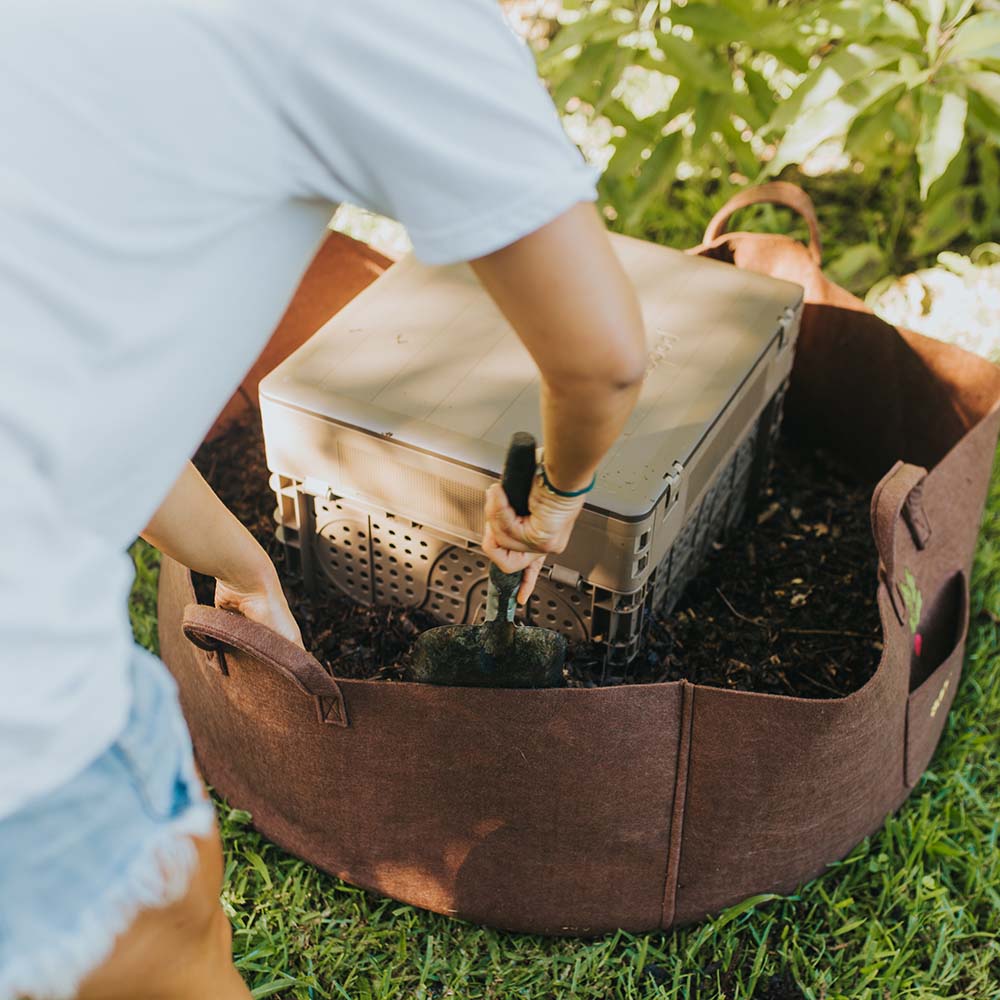Your backyard is a little haven right at your doorstep - at least, it should be.
Have you been conquered by the elements inside your own fence-line? No one likes struggling with harsh sunlight, frigid breezes, or too much shade in the yard. But it’s possible to use nature to your advantage! You can create a backyard microclimate that will keep you cool when the sun is out, and warm when it goes away.
What's a microclimate?
A microclimate is a small area, sometimes just a couple of square feet, that has a different climate quality to its surroundings. Is your yard mostly sunny, except for that one little dark corner? That’s a microclimate!
So, how do you create one of your own? There are a few things to keep in mind when planning how to build your backyard paradise - sunlight, air circulation, and temperature.
Sunlight
What’s the light like in your garden? Are you subjected to a lot of direct sun year-round, or just the summertime? How does it change during the different seasons?
Answering these questions will help you decide what type of foliage to plant. For example, if you live in a hot climate where the sun is intense year-round, you’ll want to plant perennial trees over deciduous ones, so that you’ll be shaded all year long.
Air Circulation
Is your backyard prone to strong winds, or do you barely ever feel a breeze? This again will influence not only the type of plants you choose, but also how you use water to your advantage!
Placing a small water feature in a shaded area of your yard, where the air flows through, can act like natural air conditioning for your garden during Summer. As the hot air rolls across the surface of the cool water, it lowers the temperature of that air, turning it into a refreshingly cool breeze.
Temperature
What's the overall temperature of your garden year-round? How does it change during the seasons? This is an important one! If you’re not sure what the temperature is in your garden, you’re not going to know how you’d like to correct and shape it.
Spending more time outside, even in a chilly winter or hot summer, will give you the best idea of what you what to change. Just get out there!
Making Your Microclimate
Once you’ve got an idea of the things that you want to change about your garden, you can start planning. There are endless possibilities, so we’ve selected a few examples of the tools you can use to shape the microclimate of your garden. The sky really is the limit here, so don’t be afraid to think outside the box!
What you can use to influence your gardens' microclimate:
- Trees
- Water features
- Lawns
- Fruit trees & flowers
- Mulch or stone
- Vines
- Bamboo
Trees
Trees can block the sun out during Summer, and have leaves that fall away and let the light in during Winter. Think about your house when planting trees - you want to make sure your windows will still get sun during Winter, otherwise you might make your house colder from too much shade!
Water Features
Ponds are excellent temperature stabilisers! If you plan it right, ponds can offer you year-round heating and cooling in the garden.
In the summer months, the water should be shaded by the trees, cooling your yard as the warm air turns cold on its surface and blows over it. Then in winter, as leaves fall away the sun should warm the water. As the temperature drops in the afternoon, the water will release the heat it absorbs during the day and warm your garden through the evening and night!
Lawns
If you’ve got pavers in your hot yard, consider replacing them with a lawn. Pavers absorb the suns rays and radiate heat throughout the garden. Lawns, however, don’t absorb as much heat, making for a cooler garden!
If your garden is too cold, then the opposite is true! Consider placing some pavers in a nice, sunny area.
Fruit Trees and Flowers
Boring oak trees aren't the only way to create a microclimate. You can also plant fast-growing fruit and flower trees in your yard! Trees like fig and frangipani will shade your garden just as well, while adding delicious life and colour to your space.
Mulch or Stone
Got cold spots in your garden? Lay down a thick topsoil of mulch! It'll prevent weeds from growing, and add thermal mass to absorb and store heat. This stored heat slowly radiates back out in the evenings, levelling out the temperature of your yard.
If there’s an open space in your yard you’d like to be warmer, consider placing some large stones in the area. You can landscape them beautifully with moss or other plants, and they'll also absorb and slowly radiate heat wonderfully.
Vines
A thick wall of vines can act as a curtain to block out the sun just as well as trees can!
Bamboo
If you don’t own your own home, or are on a tight budget, try buying large planter pots and plant clumps of bamboo into them! Bamboo is a fast-growing, hearty plant with a thick foliage. It’s excellent at blocking out the sun, but since most varieties aren’t deciduous, choose where you place them wisely.
These are just a few suggestions, at the end of the day the plants and features you choose to use will come from your own personal taste. Don’t be afraid to experiment, there are endless possibilities!
Want free fertiliser for your garden?
Check out our easy to use compost systems!







Leave a comment
This site is protected by hCaptcha and the hCaptcha Privacy Policy and Terms of Service apply.